Religious and emblematic imagery provide a strong visual indicator of the Portuguese presence in Back Central. Small religious shrines in the yards of dwellings or tiles placed on the facades themselves serve as reminders of their Catholic faith and Portuguese history; flags, both of Portugal and of the Azores specifically, fly regularly throughout the neighborhood. Most of these objects are placed publicly in the front of residences (or commercial and institutional buildings), but as the small shrine in the back corner of 84 Chapel Street indicates, additional examples may be found in more private settings.
Although some of the religious subjects include familiar figures from the Catholic tradition—such as the Madonna, Saint (St.) Francis of Assisi, or the Sacred Heart of Jesus—the shrines in Back Central notably include figures specific to Portuguese religious history. For example, as might be expected, there are numerous images of St. Anthony of Padua, one of Portugal’s most important saints. And amidst the many statues of the Madonna, there are also quite a few that directly reference Our Lady of Fatima, the miraculous appearance of Mary to three Portuguese children. Azorean traditions are also represented—the image of Santo Cristo (the Holy Christ of Miracles) is a reminder of the most important religious festival on the islands.

Shrine for St. Anthony of Padua at 57 Chapel Street.
St. Anthony of Padua
St. Anthony was born in Portugal but after he joined the Franciscan Order he was sent to Padua, Italy. St. Anthony is typically depicted holding a small child—the Christ child—to remind believers to retain a child-like awe for the goodness of God’s world.
He is also a patron saint for marriage, although many Catholics still pray to him for help finding lost items with this familiar invocation: “Dear St. Anthony please come around, something’s lost and can’t be found.”
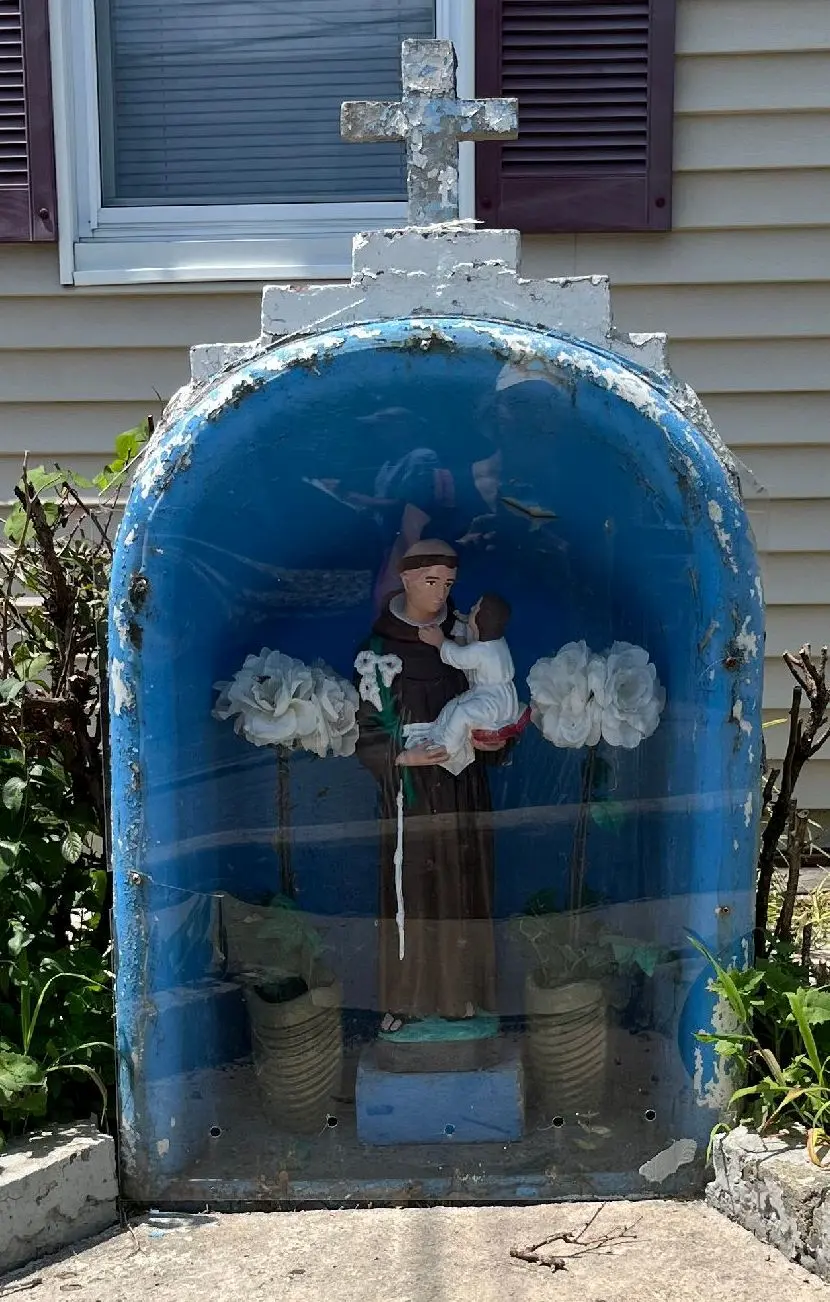
The Most Sacred Heart of Jesus
The Most Sacred Heart of Jesus also appears frequently throughout Back Central. This statue depicts the robed figure of Jesus Christ with a large heart on his chest and symbolizes God’s love for mankind. This shrine at Ames Street is also a good example of the popular term “Bathtub Madonna” often used to describe residential shrines: in some cases, the architectural framework for shrines incorporated the curved portion of a claw-foot iron bathtubs that might have been removed from the house.
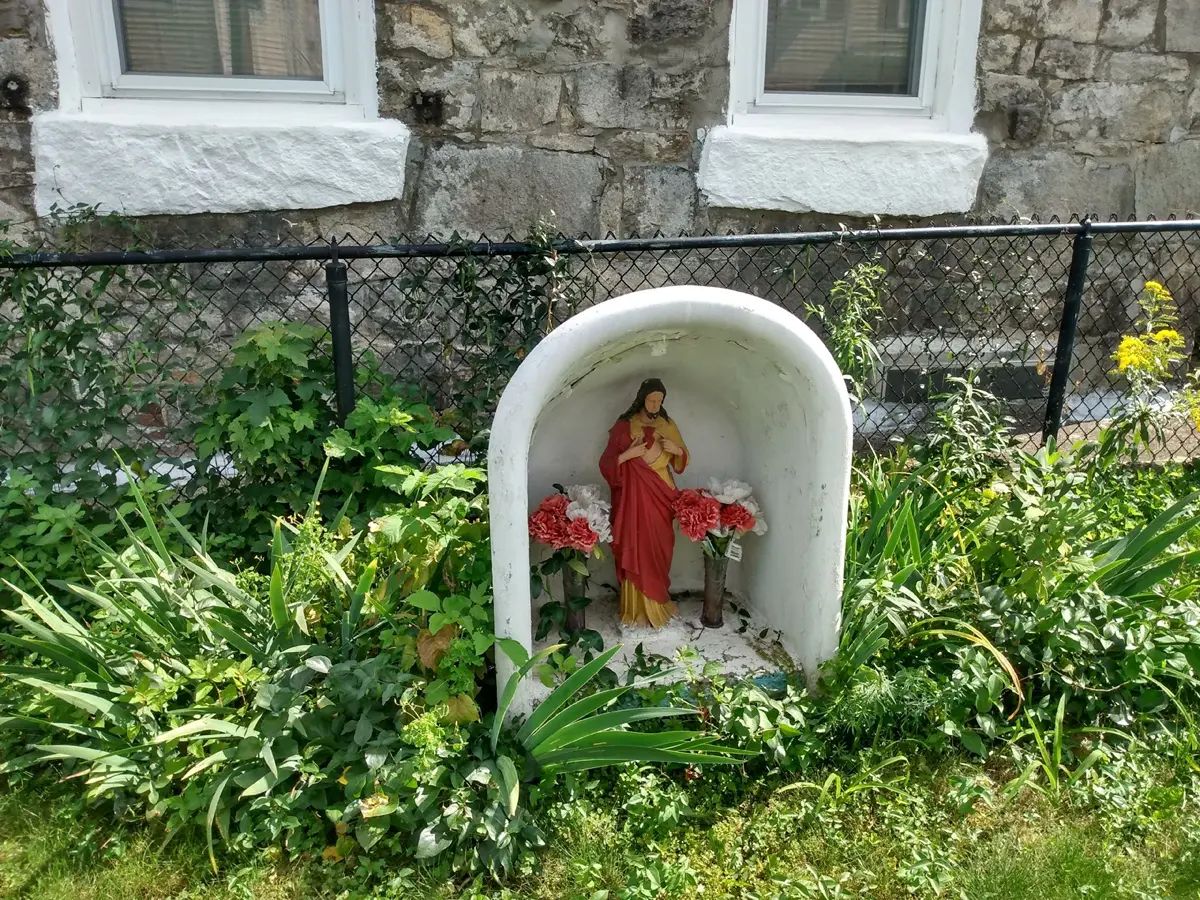
Shrine for the Sacred Heart of Jesus at 23 Ames Street.
St. Anthony of Padua and the Sacred Heart of Jesus
This shrine at 17 Elm includes both a statue of St. Anthony of Padua and a statue of the Most Sacred Heart of Jesus.
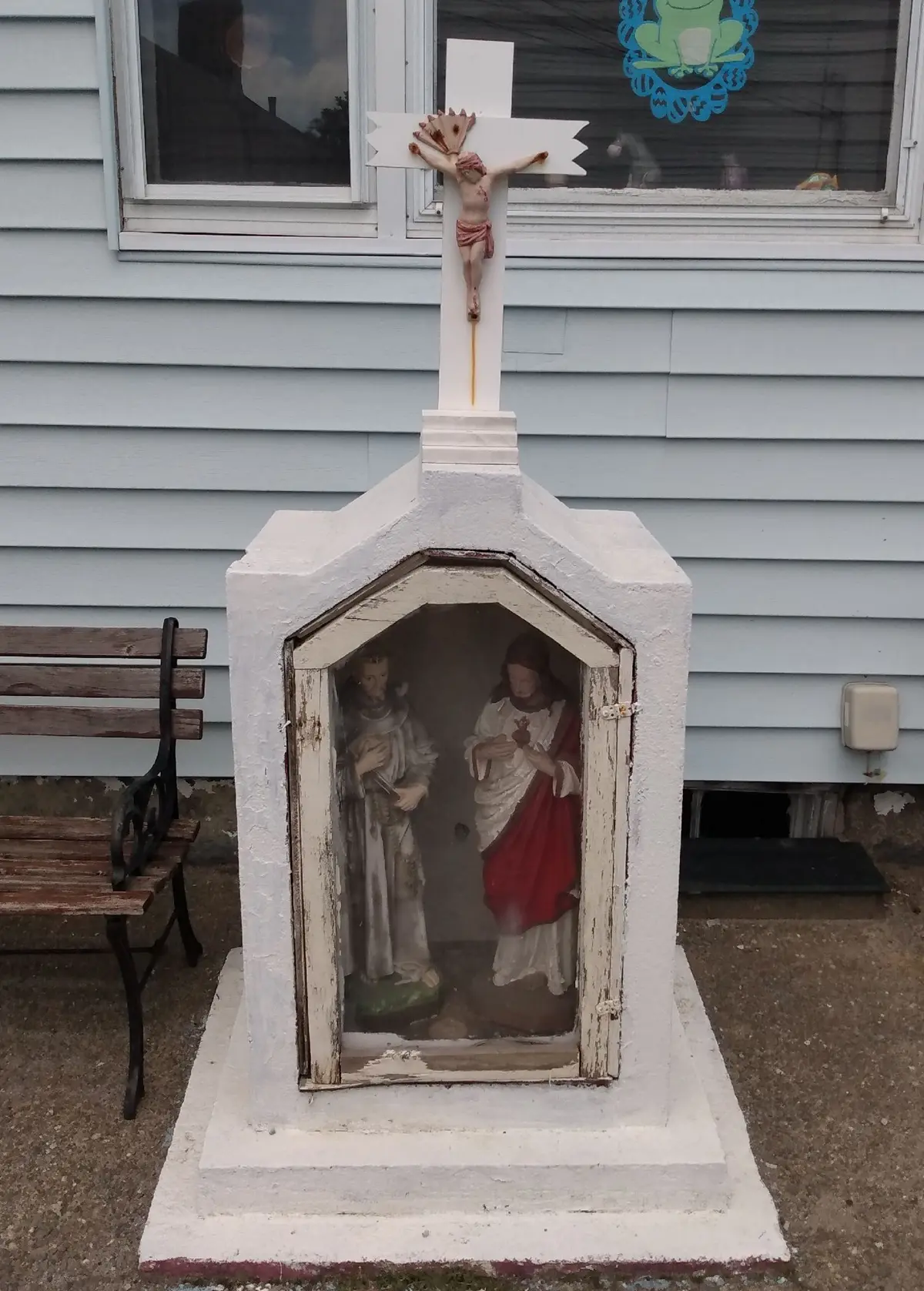
Shrine of St. Anthony of Padua with the Sacred Heart of Jesus at 17 Elm Street, 2022.
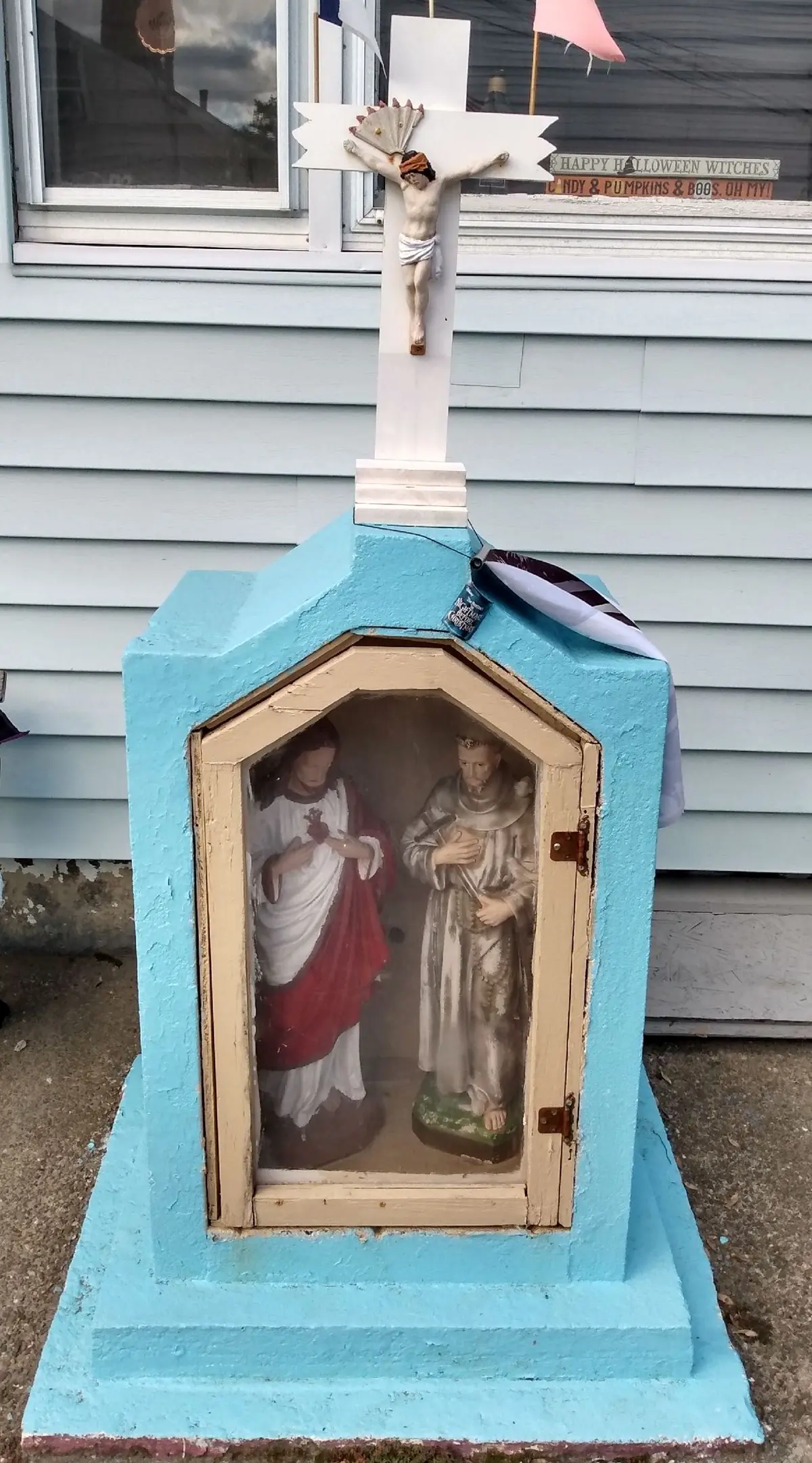
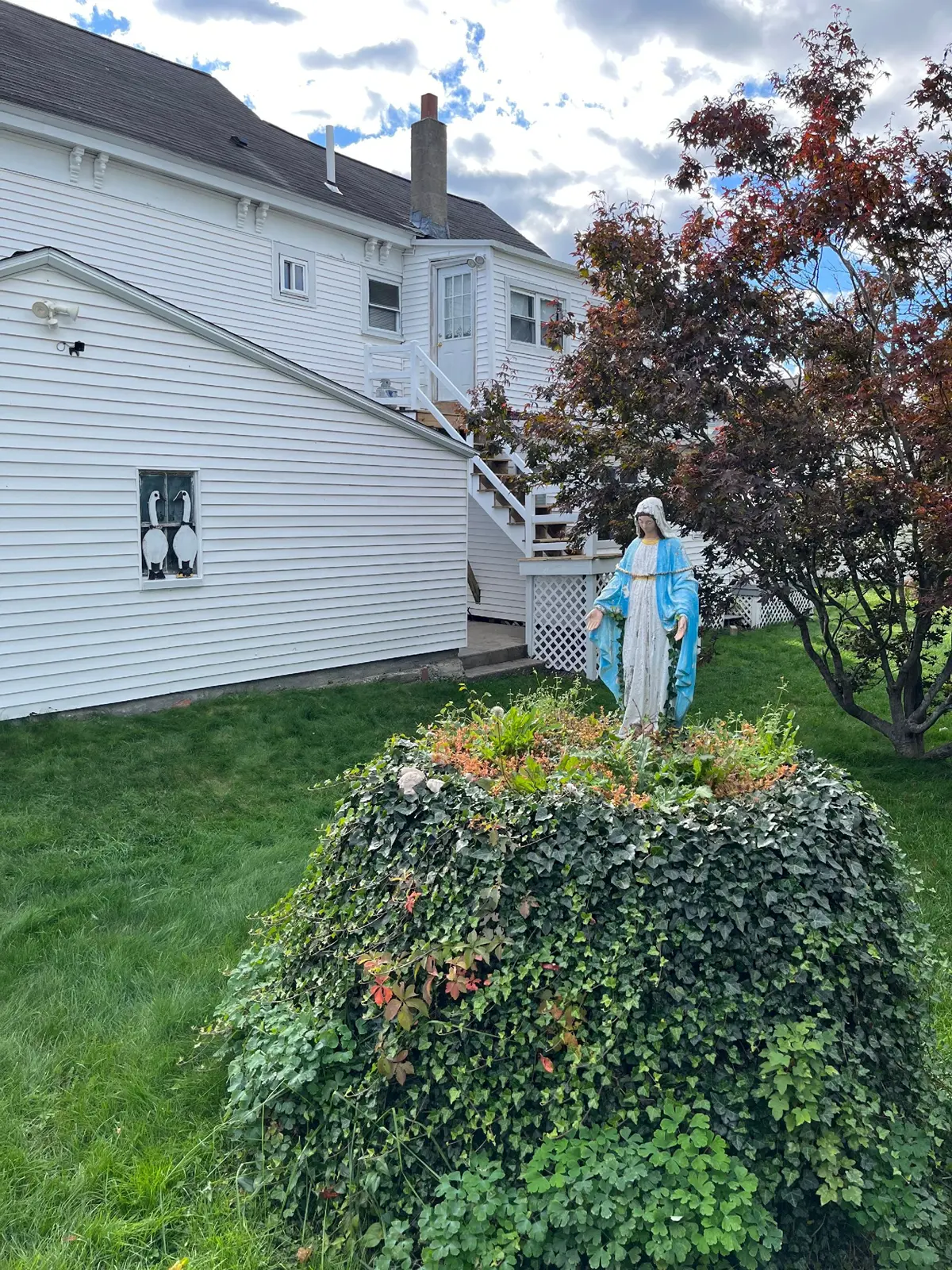
Statue of Mary in the side yard of 139 Chapel Street.
Our Lady of Fatima
Statues of Mary can be found throughout Back Central. As the mother of Christ, she symbolizes not just motherly love and care, but also serves as an important intercessor for prayers. For the Portuguese however, Mary has additional significance because of her apparition to three children at Fatima, Portugal in 1917.
The arrangement of statues at 190-192 Lawrence Street is a typical depiction of the scene—Mary arrayed in a richly embroidered robe and the three children kneeling at her feet.
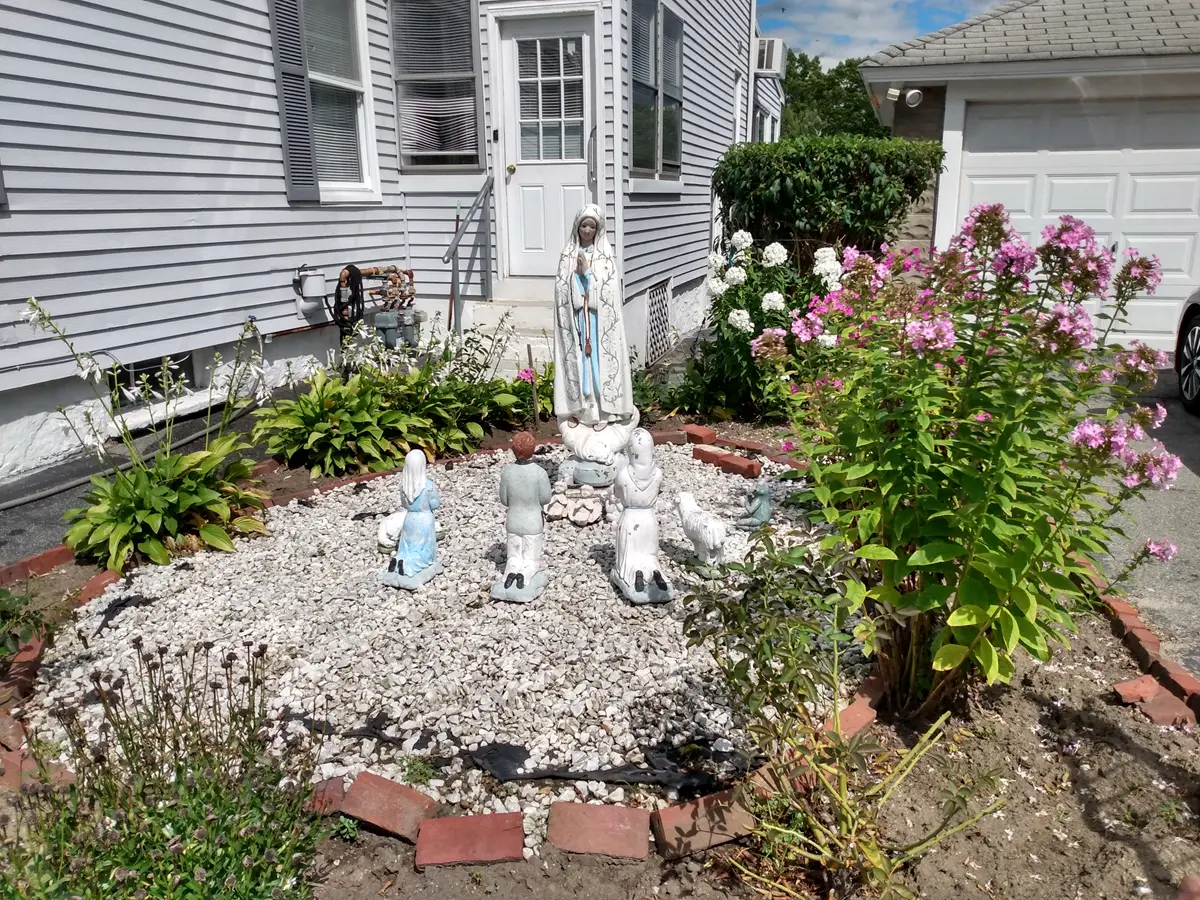
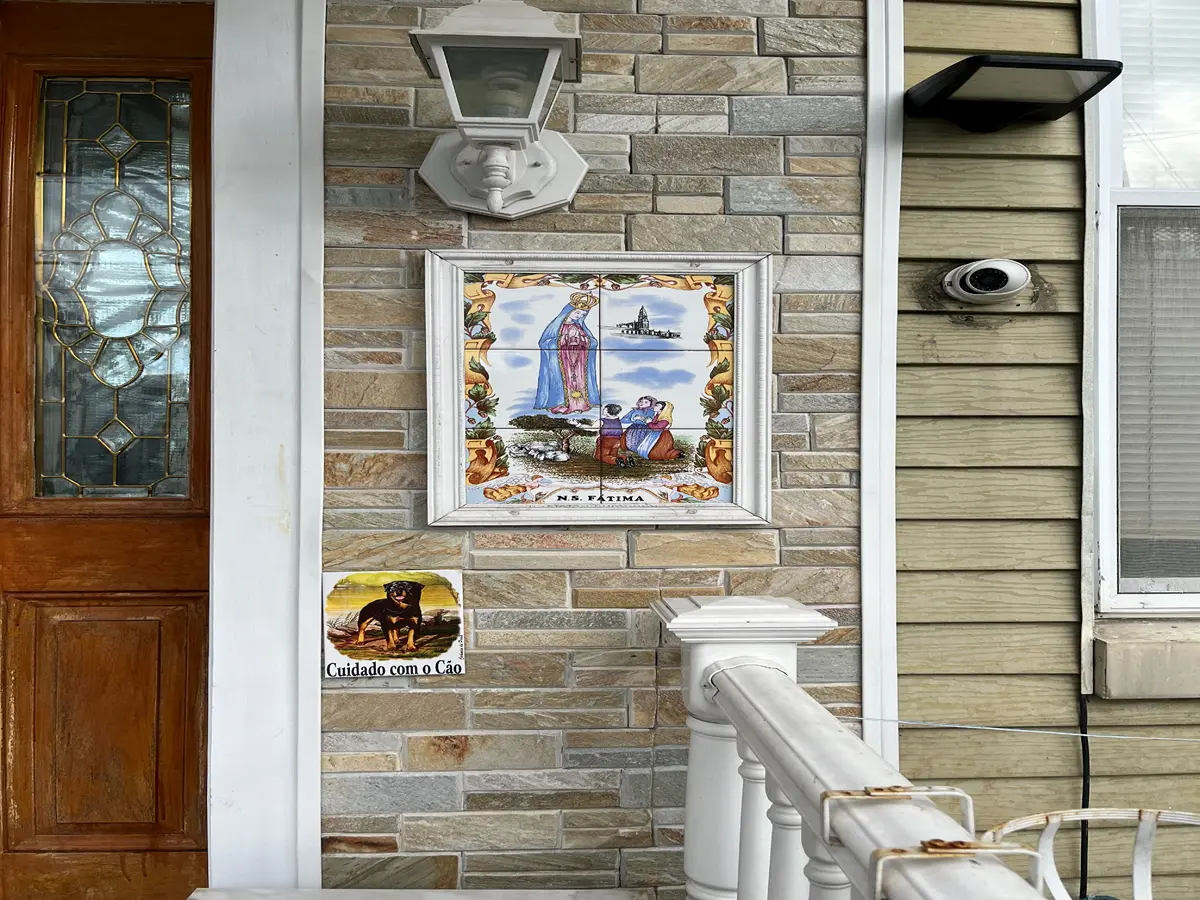
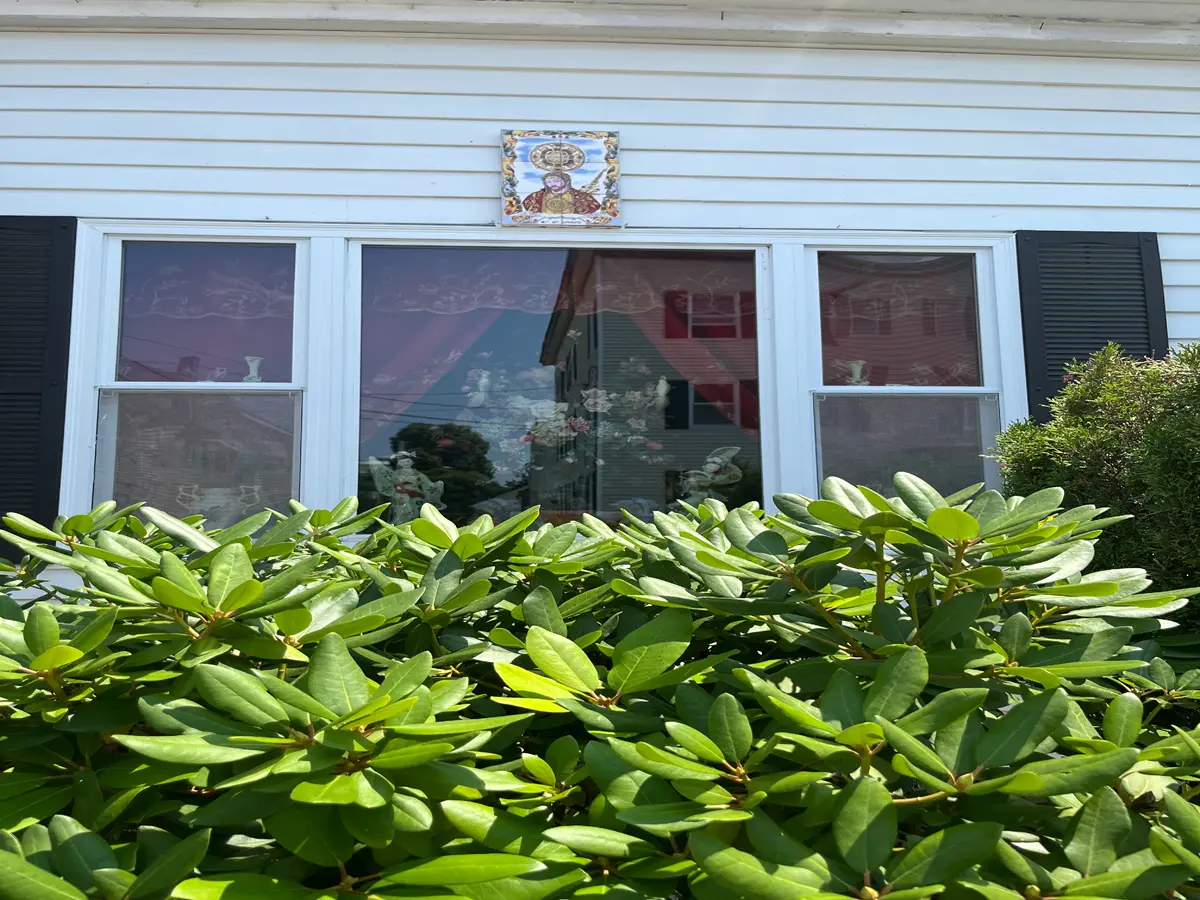
Santo Cristo
Not all religious imagery in Back Central is confined to shrines and statues, as this set of tiles on the front of 60 Chapel Street indicates. The tiles depict the image of Santo Cristo. The veneration of this image began on the island of São Miguel in the Azores in the town of Ponta Delgada in the 17th century. A small wooden image in the convent of Our Lady of Hope depicts Christ during the Passion—after he was crowned with thorns (as told in the New Testament gospel of Luke).
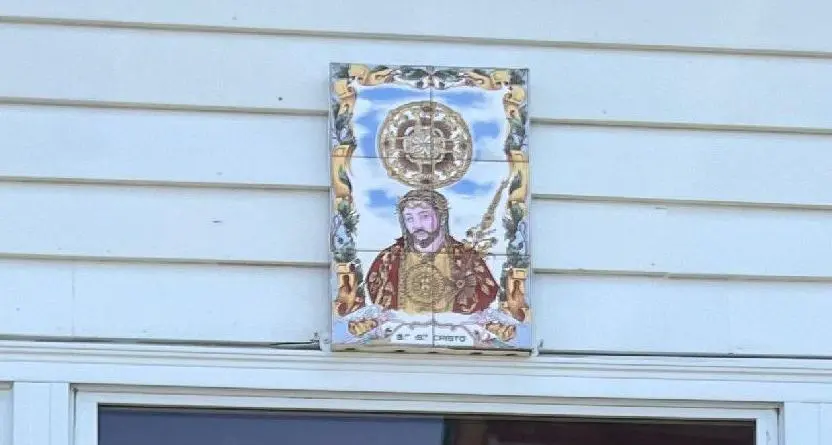
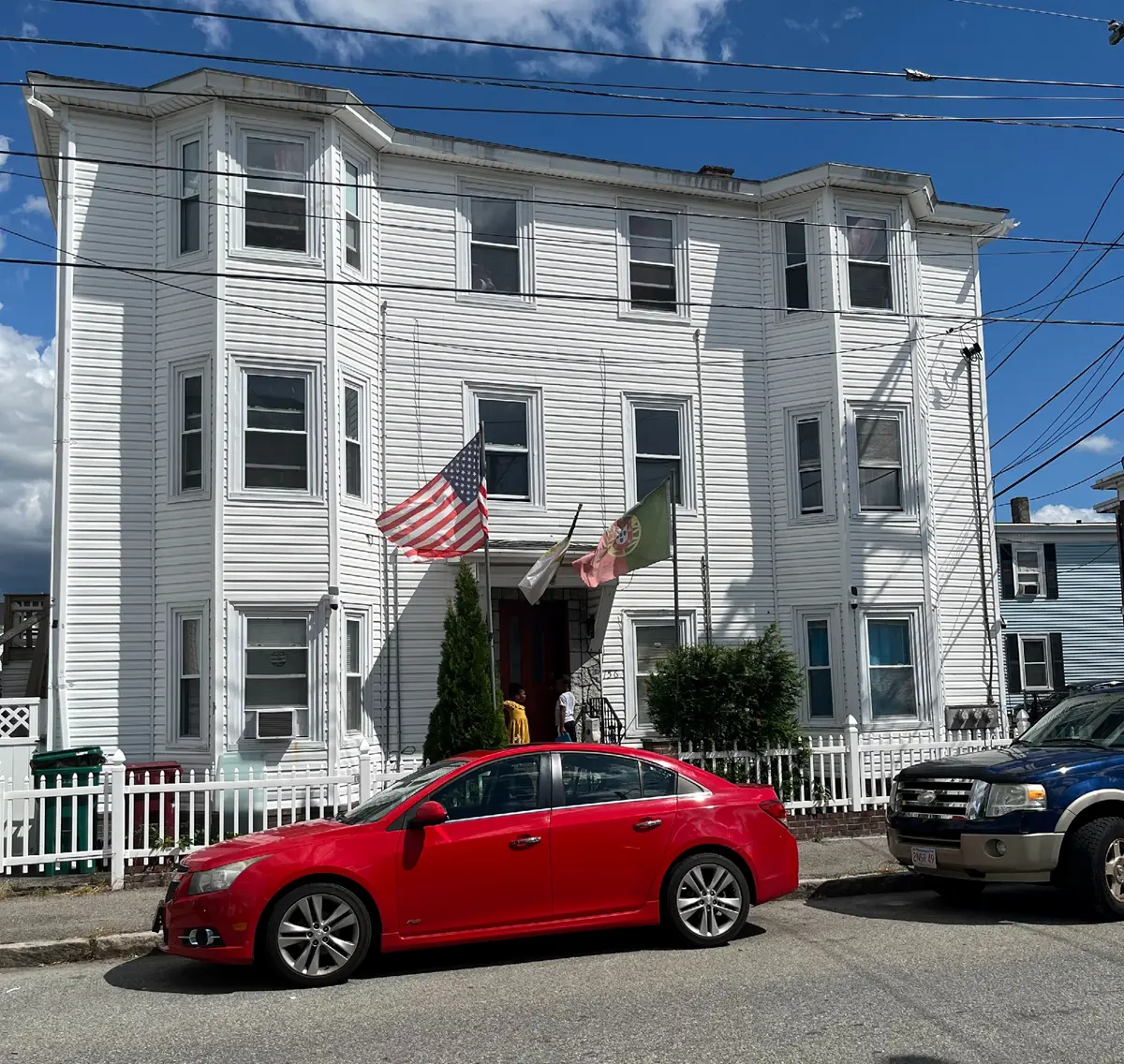
Azorean Flag
Flags also contribute to emblematic imagery in Back Central. Here at 756 Central Street, we see the flags of the United States, Portugal and the Azores (in the middle). The Azorean flag contains symbols that link it to Portugal but also assert its own identity. The field of blue and white symbolize the Portuguese constitutional monarchy (born in the Azores) that was used on the national flag of Portugal prior to the revolution of 1910. The nine stars represent the nine islands of the archipelago; and the hawk at the center, a goshawk in English but known as açor in Portuguese, for which the group of islands was originally named.
